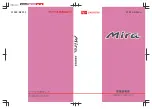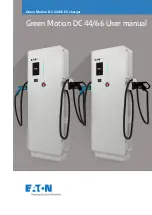
2000 Corolla(U)
188
Toyota, through its diligent research, de-
sign and use of the most advanced
technology available, has done its part to
help prevent corrosion and has provided
you with the finest quality vehicle
construction. Now, it is up to you. Proper
care of your Toyota can help ensure long-
term corrosion prevention.
The most common causes of corrosion
to your vehicle are:
The accumulation of road salt, dirt and
moisture in hard- to- reach areas under
the vehicle.
Chipping of paint, or undercoating
caused by minor accidents or by
stones and gravel.
Care is especially important if you live
in particular areas or operate your ve-
hicle under certain environmental condi-
tions:
Road salt or dust control chemicals will
accelerate corrosion, as will the pres-
ence of salt in the air near the sea-
coast or in areas of industrial pollution.
High humidity accelerates corrosion es-
pecially when temperatures range just
above the freezing point.
Wetness or dampness to certain parts
of your vehicle for an extended period
of time, may cause corrosion even
though other parts of the vehicle may
be dry.
High ambient temperatures can cause
corrosion to those components of the
vehicle which are prevented from
quick- drying due to lack of proper ven-
tilation.
The above signifies the necessity to keep
your vehicle, particularly the underside, as
clean as possible and to repair any dam-
age to paint or protective coatings as
soon as possible.
To help prevent corrosion on your
Toyota, follow these guidelines:
Wash your vehicle frequently. It is, of
course, necessary to keep your vehicle
clean by regular washing, but to prevent
corrosion, the following points should be
observed:
If you drive on salted roads in the
winter or if you live near the ocean,
you should hose off the undercarriage
at least once a month to minimize cor-
rosion.
High pressure water or steam is effec-
tive for cleaning the vehicle’s underside
and wheel housings. Pay particular
attention to these areas as it is difficult
to see all the mud and dirt. It will do
more harm than good to simply wet the
mud and debris without removing them.
The lower edge of doors, rocker panels
and frame members have drain holes
which should not be allowed to clog
with dirt as trapped water in these
areas can cause corrosion.
Wash the underside of the vehicle thor-
oughly when winter is over.
See “Washing and waxing your Toyota” for
more tips.
Check the condition of your vehicle’s
paint and trim. If you find any chips or
scratches in the paint, touch them up im-
mediately to prevent corrosion from start-
ing. If the chips or scratches have gone
through the bare metal, have a qualified
body shop make the repair.
Protecting your Toyota from
corrosion
Summary of Contents for Corolla 2000
Page 8: ...2000 Corolla U 8 ...
Page 22: ...2000 Corolla U 22 ...
Page 74: ...2000 Corolla U 74 ...
Page 82: ...2000 Corolla U 82 ...
Page 128: ...2000 Corolla U 128 ...
Page 136: ...2000 Corolla U 136 ...
Page 142: ...2000 Corolla U 142 ...
Page 156: ...2000 Corolla U 156 ...
Page 168: ...2000 Corolla U 168 ...
Page 198: ...2000 Corolla U 198 ...
Page 201: ...2000 Corolla U 201 Fuse locations Spare fuses ...
Page 225: ...2000 Corolla U 225 License plate lights left side ...
Page 226: ...2000 Corolla U 226 High mounted stoplight License plate lights right side ...
Page 227: ...2000 Corolla U 227 ...
Page 228: ...2000 Corolla U 228 ...
Page 236: ...2000 Corolla U 236 ...
Page 240: ...2000 Corolla U 240 ...
















































